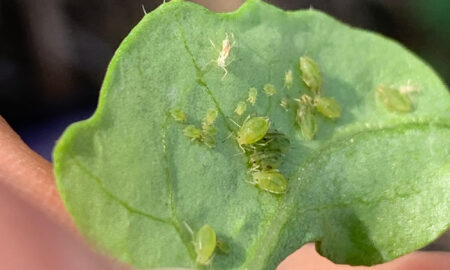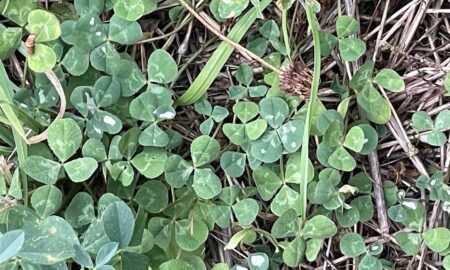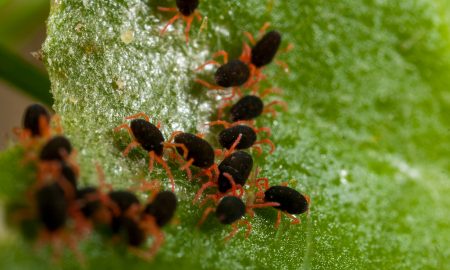Armyworms are about…but so are ‘herringbone caterpillars’ and possibly other species. So how do you tell them apart?
Where have they been reported?
For the second consecutive year, armyworm (Leucania convecta or Persectania sp.) damage in cereals has been reported in the Victorian Mallee and NSW Riverina near Swan Hill.
In the same region Proteuxoa or ‘herringbone caterpillars’ have been chewing lentil, pea and chickpea crops. Also in the Mallee district, these caterpillars have been found in canola near Ouyen.
However Proteuxoa activity has not been restricted to broadleaf crops. They have been found alongside larger populations of armyworm in a barley crop northeast of Birchip. In this case the paddock had a heavy stubble load and damage was mainly attributed to armyworm activity.
Proteuxoa have also been observed in several wheat crops and a barley crop north of Manangatang. In the NSW lower western region near Lake Mungo, large numbers (>40/m2) have damaged wheat.
Near Deniliquin in the NSW Riverina, considerable numbers (12/m2) of Proteuxoa in a barley crop were reported, alongside lower numbers of pasture day moth (Apina calisto). At this stage the damage is not severe enough to warrant control.
Distinguishing common caterpillars in crops
Armyworm are often confused with Proteuxoa, cutworms and native budworm.
Most caterpillars found in crops are known as Noctuids. We have developed the following simple guide (based on generalisations) to help distinguish caterpillars in the Noctuid group.
Below are some questions to ask yourself to help sort through these groups:
Does it have 4 sets of (abdominal) prolegs (see Budworm image below to see 4 sets of abdominal prolegs)?
If it has 4 sets, it will be an armyworm, budworm, cutworm or Proteuxoa.
Loopers (for example, brown pasture looper) have 1-2 sets of abdominal prolegs.
Is it hairy?
Native budworm (and incidentally, pasture day moth) are distinctively hairier caterpillars than armyworm, Proteuxoa and cutworm. Budworms have noticeable hairs around the head region and all over its bumpy body, while other species have none or a few sparse short hairs.
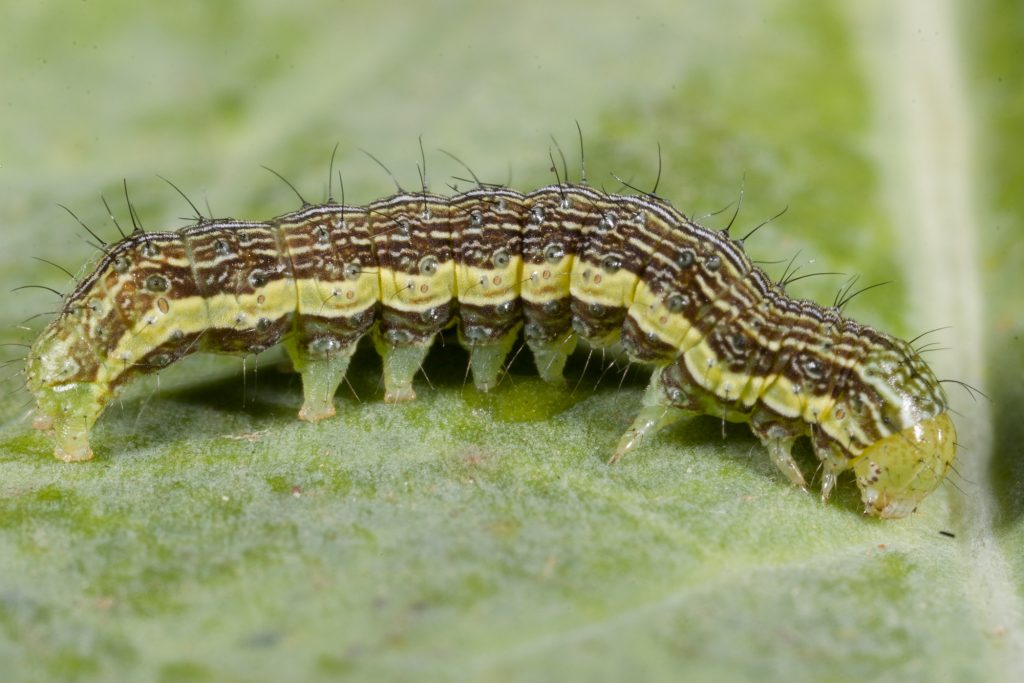
If it doesn’t have obvious hairs, does it have distinctive body stripes or other prominent markings?
The giveaway feature of armyworm (Leucania convecta or Persectania sp.) is the three parallel body stripes, always visible on the collar behind the head and usually continuing down the length of the body.
While there are three species of armyworm commonly found in southern Australia, all three caterpillars have these distinguishing stripes.
Proteuxoa sometimes have a central stripe, but also have a series of light diagonal slashes on each segment, resembling a herringbone or fishbone pattern. Hence their nickname, ‘herringbone caterpillars’. One common species of this group has a lighter patch on the final abdominal segment.
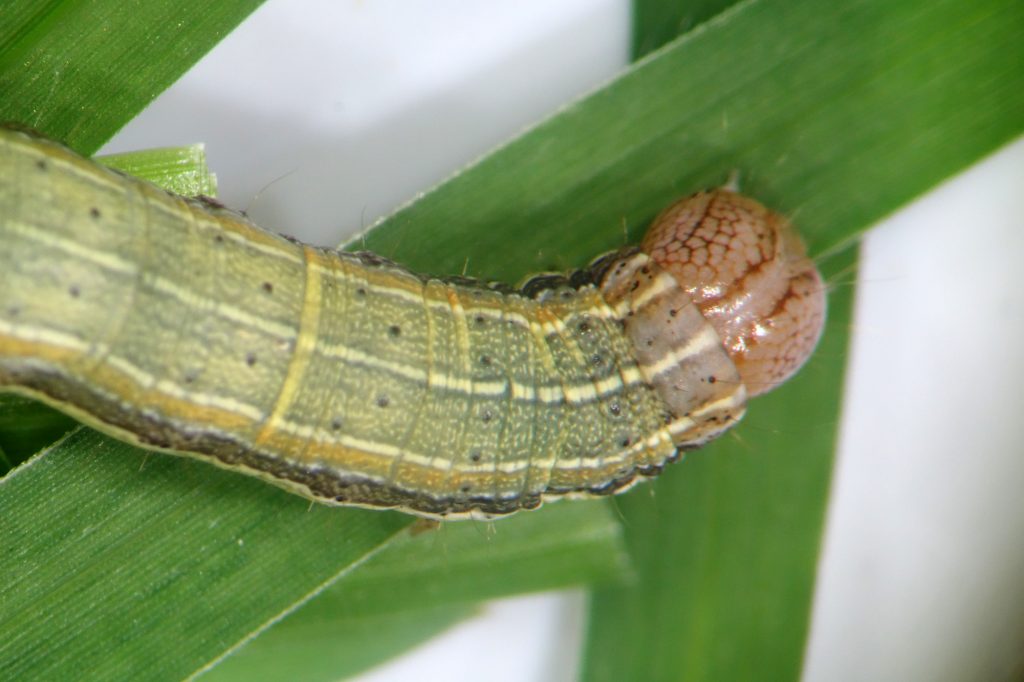
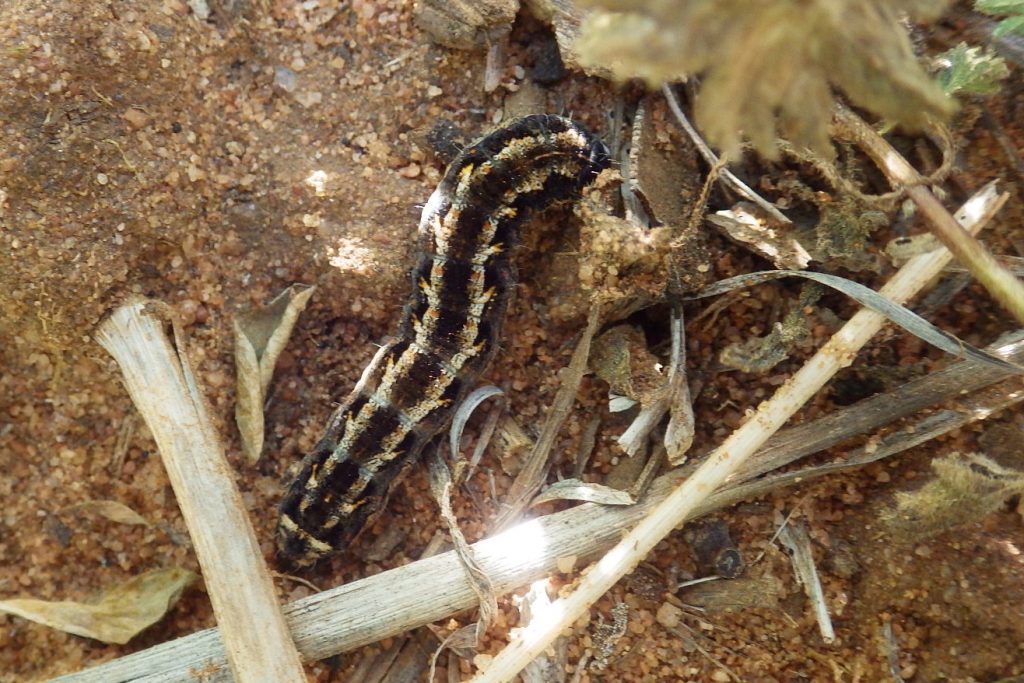
And if it doesn’t have hairs, or distinctive body markings?
Cutworms have no distinctive markings or obvious hairs and are often described as having a smooth greasy appearance.
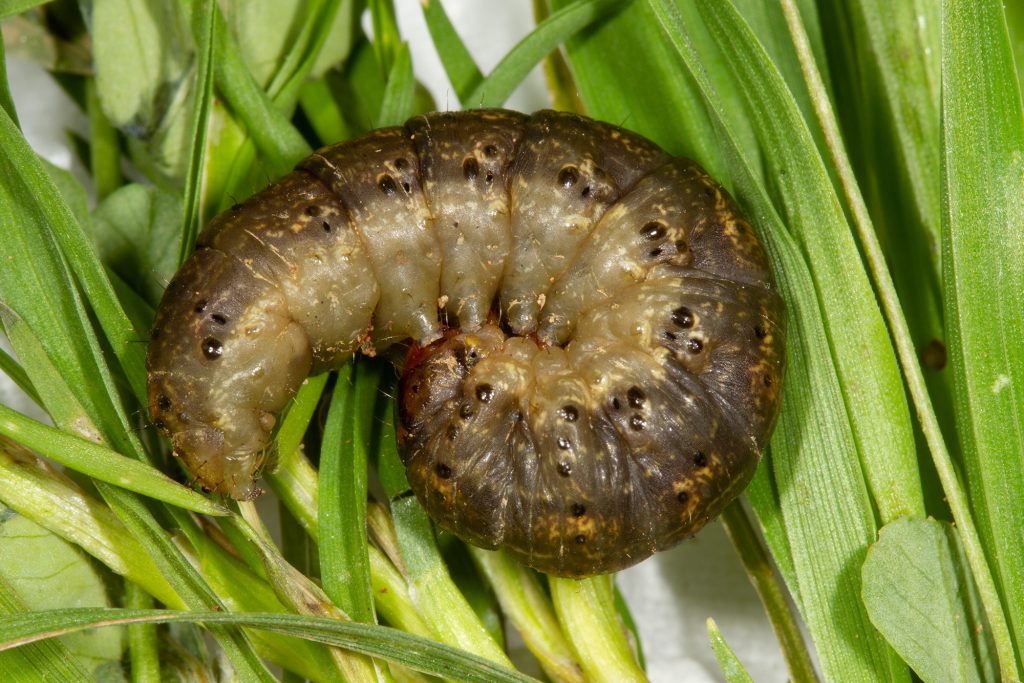
About ‘herringbone caterpillars’
There is little known about the biology of ‘herringbone caterpillars’ that are causing damage this season in the lower rainfall cropping regions; in fact there is not even a common name for the pest. There may be 70+ species in this genus. Like other Noctuid pests, it is likely this species breeds on native vegetation in inland areas.
It may be that the common pest that we have been observing this year and last is Proteuxoa atrisquamata, although the taxonomy is unclear. This species has a distinctively lighter final abdominal segment. The genus Proteuxoa is currently undergoing a major taxonomic revision and in time this will bring more clarity.
Caterpillars grow to approximately 35-40 mm in length and the rate of feeding damage will increase as the larvae progress towards maturity. Different species have been found attacking both cereal/grasses (Graminae) and broadleaf crops (pulses and oilseeds), although it is unlikely that any one species would cross over between groups, say from cereals to pulses.
Our advice
Medium to large armyworms present in cereals at this time of year will not cause head lopping later in the season.
Crops can tolerate a reasonable amount of defoliation.
For winter outbreaks of armyworm during tillering, economic thresholds of 8-10/m2 provide a guide for spray decisions.
While there are many insecticides registered against armyworm, we recommend they be used judiciously because of the risk of inducing secondary outbreaks of other pests. Parasitic flies and wasps, and predatory beetles and shield bugs commonly attack armyworms, and can suppress natural populations, particularly in spring, if not disrupted by broad-spectrum insecticides.
Of course, there are ‘softer’ insecticides such as Bacillus thuringiensis (Bt) available that would preserve beneficials. Spray Bt late in the day/evening to minimise UV breakdown of the product, and ensure the insecticide is sprayed out within 2 hours of mixing. Make sure the appropriate strain is used for the target pest, add a wetting agent and use high water volumes to ensure good coverage on leaf surfaces.
There has been no research on the management of Proteuxoa in grains. However, we expect that healthy vegetative crops should outgrow moderate foliar loss, although regular monitoring is recommended.
As with armyworms, when making control decisions, consider the number and size of larvae, the likely extent of damage remaining before pupation, and the ability of the crop to compensate.
If chemical intervention is warranted, alpha-cypermethrin has been reported to provide adequate levels of control against Proteuxoa spp.
Click here for information on armyworms.
Acknowledgements
Sources of field reports of armyworms and ‘herringbone caterpillars’
Luke Maher – Agronomist, AGRIvision Consultants (Victorian Mallee)
Andrew McMahen – Agronomist, Landmark (Victorian Mallee)
Johanna Morgan – Agronomist, Swan Hill Chemicals (Victorian Mallee)
Craig Muir – Agronomist, AGRIvision Consultants (Victorian Mallee)
Rick Rundell-Gordon – Senior consultant, all-AG Consulting and Tech Services (Victorian Mallee)
Matt Tubb – Agronomist, Landmark (NSW Riverina)
Gavin Howley (@GavinHowley)
Andrew Parr (@AndrewJParr1)
Cover image: Photo by Julia Severi, Cesar Australia


